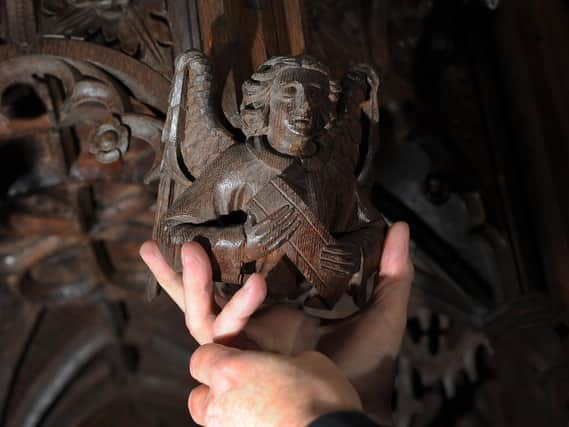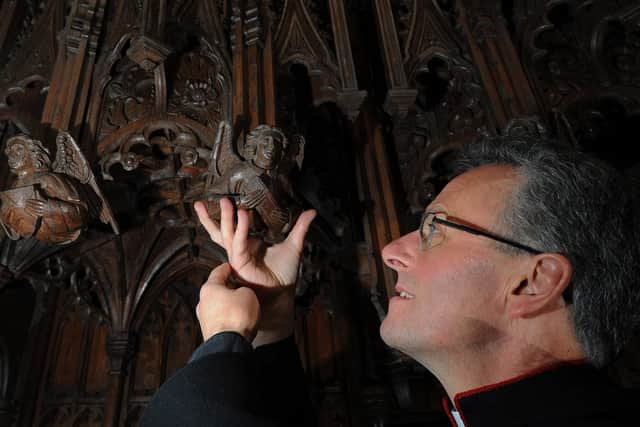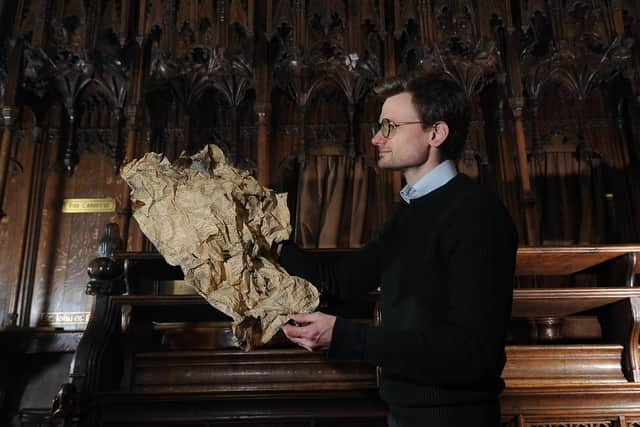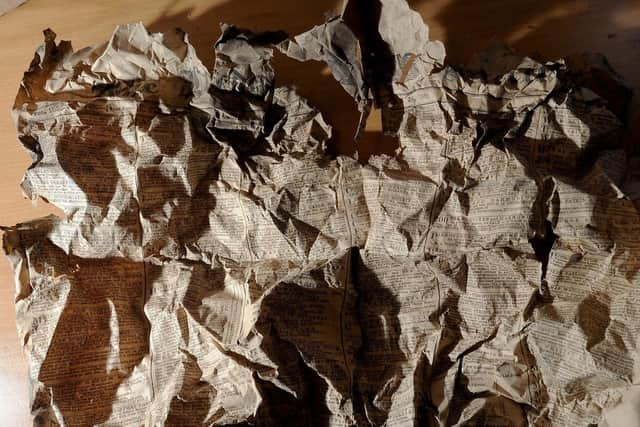Fallen angel regains its wings as restoration scheme complete at Ripon Cathedral


The intricately carved angel, crashing to the floor after centuries within Ripon Cathedral, had been the spark for major restoration work to begin within the site’s ancient quire.
Now, say conservators as 1,200 hours of work comes to a close, the future of the angel and its neighbouring treasures has been preserved for the use of generations to come.
Advertisement
Hide AdAdvertisement
Hide Ad“If we think about the ravages of history, over such a long time, it’s quite remarkable that this space is still in use after 500 years,” said conservator Tristram Bainbridge.


“We have so many of these things, which have been saved for so long. Doing something to protect them, and ensure there isn’t a benign neglect, is incredibly important.
“It’s about not neglecting our heritage.”
Ripon Cathedral’s crypt dates back to the 13th century, laying claim to being the oldest structure of any English cathedral.
The present Cathedral building dates from 1180 and today serves a community of 2.5m people, across Leeds, West and half of North Yorkshire.


Advertisement
Hide AdAdvertisement
Hide AdThe £120,000 project for its 15th century quire, with majority funding from the Headley Trust; Charles and Elsie Sykes Trust and Pilgrim Trust, has seen 70 angels mended and preserved, dusted free from grime and waxed until they shine.
The canopies over the quire’s stalls have been restored, as have the misericords which once served as discrete seating for clergy.
Carved by artisans over 500 years ago, the woodwork here has been held up as not just of national importance, but international significance.


And as the quire is opened to the public once again after eight-weeks of work, there is a huge difference to be marked, say the craftsmen.
Advertisement
Hide AdAdvertisement
Hide Ad“The surfaces look alive, catching the gleam in the light,” said Mr Bainbridge, who led the project for specialists Bainbridge Conservation.
“It almost glitters, after years of being covered in dust and grime.”
Fascinating finds
Through the project, there have been some interesting finds. Organ music, which has lain lost for uncounted years, and an old newspaper clipping from the Leeds Mercury.
Dated Boxing Day, 1868, it lists auctions and house sales, alongside an advert for a pantomime of Ali Baba and the 40 thieves at the Royal Amphitheater.
Advertisement
Hide AdAdvertisement
Hide Ad“It was a real find, and it was a really tricky one to extract as it was behind the tracery,” said Mr Bainbridge.
“We’ve also found a lot of pieces of the carving itself, which had dropped off, and we had to do a bit of ‘jigsaw-puzzling’ to piece it all together again.”
Among the work, the original 15th century craftsmen’s marks have been in evidence, in the numbering system used to piece it all together and in the scribe marks they made.
This, said Mr Bainbridge, has only brought home to those involved the significance of what they have been working on, and its place in the annals of history.
Advertisement
Hide AdAdvertisement
Hide Ad“We are in the shadows of the people that made this, standing in the same places, looking at the same things,” Mr Bainbridge concludes.
“This is so special, and unique. It’s a real privilege, to be able to work on this and to make sure that these carvings are still in enjoyment long after we’re gone.”
